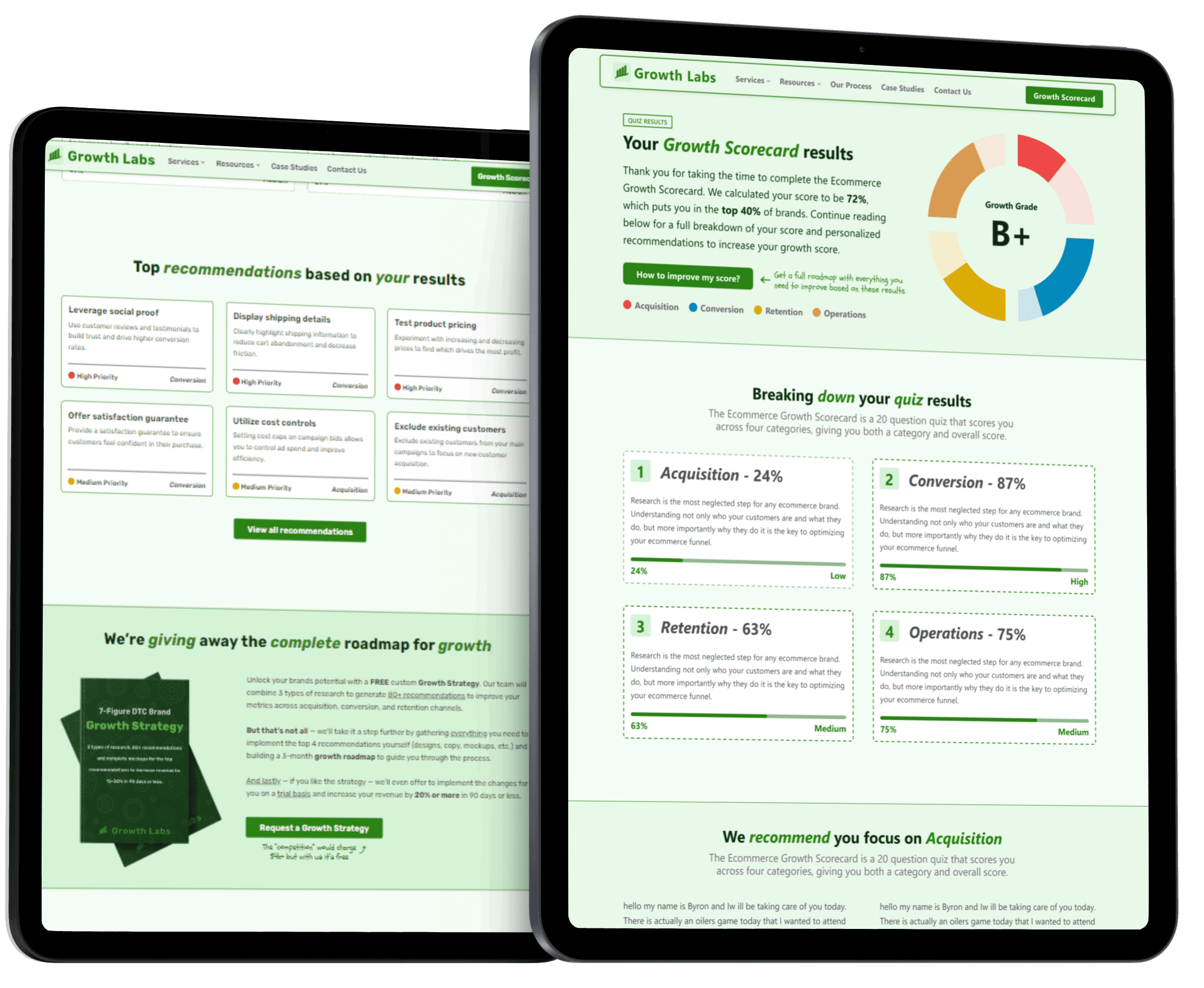Conversion rates: 6 tips to improve them
Our top recommendations for improving your conversion rates and turning more visitors into customers.

The main concern for the vast majority of companies is customer acquisition, especially online when you're competing with so many other brands for your customers attention.
Sure — you could increase your marketing budget to get more eyes on your pages and cross your fingers in hopes that they hand over their credit card information...
- OR -
You can take that budget and optimize your website, clarify your message, improve your offer, and get more of those eyeballs turning into dollar signs!
Strategies To Improve Conversion Rate
This is the part where we get into the meat and potatoes of what conversion rate is really about. Search around the internet and you'll find a million plus one articles saying something like this:
Changing the colour of our checkout button increased conversions by 140%!
And it worked for a day — maybe it even worked for a week. But after a month the conversion rates dipped right back down to where they were before and made no impact on the companies bottom line whatsoever.
That's because they failed to focus on what really matters: the customer
You might see a 1% difference here and there by changing some button colours, throwing around a few buzzwords, and adding a slick new animation — but if you can't pinpoint and address the problems that are stopping the customer from buying you'll never have any meaningful success.
Now that we've gotten that out of the way, on with the show!
1) Start Tracking Your Conversions
There's a quote we always use in the world of optimization and it goes like this:
"That which is measured improves"
You can make assumptions about your customers preferences and guess your way to an extra couple of sales per month — or you could use an analytics software like Optimizely to measure the impact of your changes and let the numbers guide your decisions.
P.S. We HIGHLY recommend you choose the latter...
2) Align Your Message
We get it. it's hard to make every bit of text that your brand puts out have the same voice, especially when a hundred different people from a dozen different teams have their hand in the cookie jar.
But if you promise your customer one thing in an ad, and then they click on it only to find out you can't live up to your promise what do you think they'll do next? That's right, they'll bounce.
Take a look at your customer journey with a fresh pair of eyes and answer these questions:
- Are you following through with every promise you're making to them?
- Do the website and the marketing copy use the same voice?
- What about the visuals? Is your branding consistent?
3) Remove Distractions
If you're on a call with a sales rep and there's a crying baby in the background, a helicopter flying over head, and their webcam keeps malfunctioning, you're not really going to hear what they're saying are you?
The same concept applies to your website.
If you're showing your customer six different products and asking for their email in a popup before they've even read the product description they're going to lose focus. Once their focus is gone their intent goes with it and you've lost yourself a customer.
Here are four common distractions that should be removed from high intent pages, or at least placed after your offer:
- Email signup forms
- Recommended products
- Cluttered navigation menus
- Any link that distracts the user from purchasing
4) Retarget Abandoned Carts
What do cold coffee, cold showers, and cold weather all have in common? Nobody likes them. You want to be warm and so do your potential customers.
If you're tracking your customers across their journey there are a few different ways you can retarget them after they close out of the tab.
It doesn't matter if it's an email campaign, an instagram ad, or a straight-up phone call, retargeting a lost customer is the easiest way to drum up new business.
And if nothing else it's an incredible way to learn more about why your customers aren't buying so that you can solve that problem for the next customer.
5) Improve Your Copy
It's staggering just how many companies have a great website design, top-notch product images, and a competitive price and yet completely flopped when it comes to their copywriting.
If you can't convince your customer that your product solves their problem, how can you expect them to fork over their hard earned cash?
The most common mistake that ecommer brands are making is assuming that the customer has brand awareness when they land on the site.
This is especially true when a company is running ads on Facebook to generate traffic.
How often is it that they are experiencing your brand for the first time when landing on your product page only to find themselves completely clueless as to what your brand stands for and what problems your product solves?
Moral of the story: Add brand content to your landing pages to address common customer concerns.
6) Mention Your Shipping Policy
We saved the best (read: easiest) for last.
If you have free shipping tell your customer about it. There are three common places to do this:
- On the product page near the buy button
- On the cart page near the checkout button
- On the first step of the checkout page
And even if you don't have free shipping — let the customer know what they can expect before they commit to the sale.
If someone told you that a product was $25.00, only for you to get to the checkout and find that it was $40.00 with shipping, would you not be disappointed?
What if instead they told you the product was $25.00 (+$15.00 shipping) before you even clicked the buy button? In that case you would have never assumed the price and so you would never be disappointed.
The exact same concept applies to shipping times. In the age of Amazon customers expect 2-3 day shipping and if they get to the last step of the checkout only to find out they'll have to wait an extra week to get it in the mail that disappoinment will come flooding back.
Solve this altogether by adding your estimated shipping time to the product page and be as accurate as possible when doing so.
Conclusion
When attempting to improve conversion rates always remember — If you want to move the needle it it is always better to focus on solving barriers to purchase than testing out the latest gimmicks.
If you have any questions or would like more information on how Atomic can help your business skyrocket conversions, click the get started button at the top of the page and book a consultation!

Know you need to improve but have no clue where to start?
Answer our 20 question quiz and instantly receive a scorecard with a full breakdown of your biggest growth levers and 30+ personalized recommendations that you can implement today.
Get your Growth ScorecardLoading